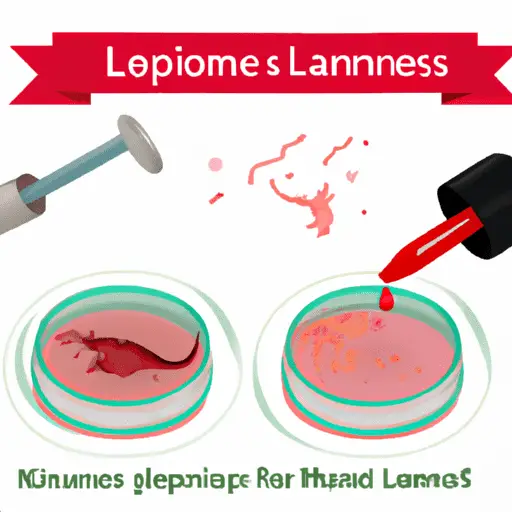Understanding the Origins and Removal Methods of Lipomas
-
Table of Contents
- Understanding the Origins and Removal Methods of Lipomas
- Key Takeaways
- Introduction: Unraveling the Mystery of Lipomas
- The Origins of Lipomas
- When and Why to Remove a Lipoma
- Methods of Lipoma Removal
- FAQ Section
- What is a lipoma?
- What causes lipomas?
- Do lipomas need to be removed?
- How are lipomas removed?
- Can lipomas come back after removal?
- Conclusion: Navigating the World of Lipomas
- Further Analysis
- Key Takeaways Revisited
Understanding the Origins and Removal Methods of Lipomas

[youtubomatic_search]
Key Takeaways
- Lipomas are benign fatty tumors that can occur anywhere in the body.
- The exact cause of lipomas is unknown, but genetic factors and trauma may play a role.
- While lipomas are generally harmless, they can cause discomfort or cosmetic concerns, leading some people to seek removal.
- Several removal methods exist, including surgical excision, liposuction, and steroid injections.
- Consultation with a healthcare provider is essential to determine the best course of action for lipoma removal.
Introduction: Unraveling the Mystery of Lipomas
Lipomas are common benign tumors composed of fat cells. They can occur anywhere in the body where fat cells are present, but are most commonly found in the subcutaneous tissues of the trunk, neck, and extremities. Despite their prevalence, the origins of lipomas remain somewhat of a mystery. This article aims to shed light on the possible causes of lipomas and explore the various methods available for their removal.
The Origins of Lipomas
While the exact cause of lipomas is unknown, several factors are believed to contribute to their development. Genetic factors appear to play a significant role, with certain inherited conditions such as familial multiple lipomatosis and Gardner’s syndrome associated with an increased risk of lipoma formation. Trauma may also trigger the growth of a lipoma, although this is a subject of ongoing debate among researchers.
According to a study published in the Journal of Clinical Pathology, lipomas may also be linked to obesity. However, the relationship between body fat and lipoma development is complex and not fully understood. More research is needed to clarify this connection.
When and Why to Remove a Lipoma
Lipomas are generally harmless and do not require treatment unless they cause discomfort or cosmetic concerns. Some people may choose to have a lipoma removed if it is large, growing rapidly, or located in a visible or sensitive area. Others may seek removal due to pain or discomfort, particularly if the lipoma is pressing on nerves or other structures.
It’s important to consult with a healthcare provider before deciding to remove a lipoma. They can provide guidance on the risks and benefits of different removal methods and help determine the best course of action based on the individual’s overall health, the size and location of the lipoma, and personal preferences.
Methods of Lipoma Removal
Several methods are available for lipoma removal. The most common is surgical excision, in which the lipoma is cut out under local anesthesia. This method is typically used for larger lipomas and has a high success rate, but it can result in scarring.
Liposuction is another option, particularly for lipomas that are located in visible areas or those that are deep within the body. This method involves inserting a thin tube into the lipoma and sucking out the fat cells. While liposuction leaves less scarring than surgical excision, it may not remove the entire lipoma, increasing the risk of recurrence.
Steroid injections can also be used to shrink lipomas. This method is less invasive than surgery or liposuction, but it may take several treatments to achieve the desired result and the lipoma may regrow over time.
FAQ Section
What is a lipoma?
A lipoma is a benign tumor composed of fat cells. It can occur anywhere in the body where fat cells are present.
What causes lipomas?
The exact cause of lipomas is unknown, but genetic factors and trauma may contribute to their development.
Do lipomas need to be removed?
Lipomas do not require treatment unless they cause discomfort or cosmetic concerns. Consultation with a healthcare provider can help determine the best course of action.
How are lipomas removed?
Lipomas can be removed through surgical excision, liposuction, or steroid injections. The best method depends on the individual’s overall health, the size and location of the lipoma, and personal preferences.
Can lipomas come back after removal?
While lipoma recurrence is rare, it can occur, particularly if the lipoma was not completely removed.
Conclusion: Navigating the World of Lipomas
Understanding the origins and removal methods of lipomas can help individuals make informed decisions about their health. While the exact cause of lipomas remains unknown, genetic factors and trauma appear to play a role. Lipomas are generally harmless, but they can cause discomfort or cosmetic concerns, leading some people to seek removal. Several removal methods exist, including surgical excision, liposuction, and steroid injections. Consultation with a healthcare provider is essential to determine the best course of action.
[youtubomatic_search]
Further Analysis
As research continues, our understanding of lipomas and their treatment options will undoubtedly evolve. For now, individuals with lipomas can take comfort in knowing that these growths are typically benign and that several effective removal methods are available. As always, consultation with a healthcare provider is key to making the best decisions about lipoma treatment.
Key Takeaways Revisited
- Lipomas are benign fatty tumors that can occur anywhere in the body.
- The exact cause of lipomas is unknown, but genetic factors and trauma may play a role.
- While lipomas are generally harmless, they can cause discomfort or cosmetic concerns, leading some people to seek removal.
- Several removal methods exist, including surgical excision, liposuction, and steroid injections.
- Consultation with a healthcare provider is essential to determine the best course of action for lipoma removal.


